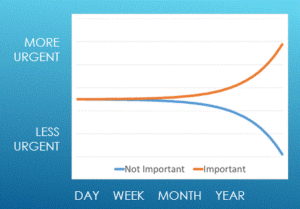Noise and Attention
In previous posts, I’ve talked about Urgent vs. Important and using the Eisenhower Matrix. I wrote these to introduce a mental model of how to mange our attention and be more productive, both personally and professionally. I want to consider another topic in this vein: Noise. (Note: much of this thinking was triggered by a post on A Life of Productivity by Chris Bailey, check it out. The core thoughts come from Amusing Ourselves to Death by Neil Postman.)
As knowledge workers, our attention is our most important productive tool. In my attempt to manage my own attention, I try to evaluate how I’ve used my attention in the past. In one instance several years ago, I recognized that listening to talk radio during my afternoon commute (politics, in particular) frittered away my attention. So, I stopped listening to it. I’ll lay out the logic of my decision after I outline the definition of information as noise.
Bailey cites four traits of noise from Before Happiness, by Shawn Achor (which I have not read):
It is unusable, or not actionable.
It is untimely, and will likely change before it can be acted upon.
It is hypothetical, rumors or opinions with an unknowable level of truth.
It is distracting, diverting attention from information that may actually be actionable.
- Let’s look at my drive time political talk shows through this lens:
The information I consumed was unusable, partly because it’s scope was national, but mostly because it was repetitive and merely reinforced opinions I already held. - Outside of an election cycle, the opinions and positions expressed were untimely.
- Since the information was solely based on individuals’ opinions it was highly hypothetical.
- It felt like I was using my attention in a good way, but I wasn’t. My attention was distracted from acquiring other information that may have been actionable for me.
After I changed my listening habits to books on tape and music, I found that I was consuming actionable information, or at least calming, cheerful, enjoyable music – clearly a better way of using my scarce attention.
When we consume noise, we lose attention that could be focused on gathering actionable information. Take a minute and think about how you are using your attention.
Question: Can you eliminate some of the information noise around you and use that attention to improve your mind or your mood?
